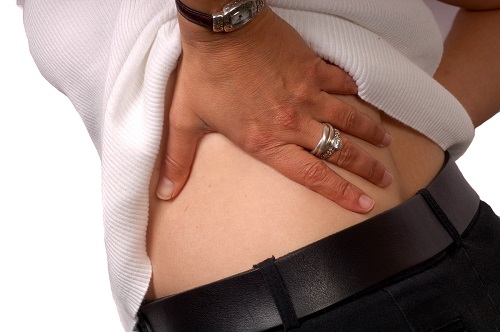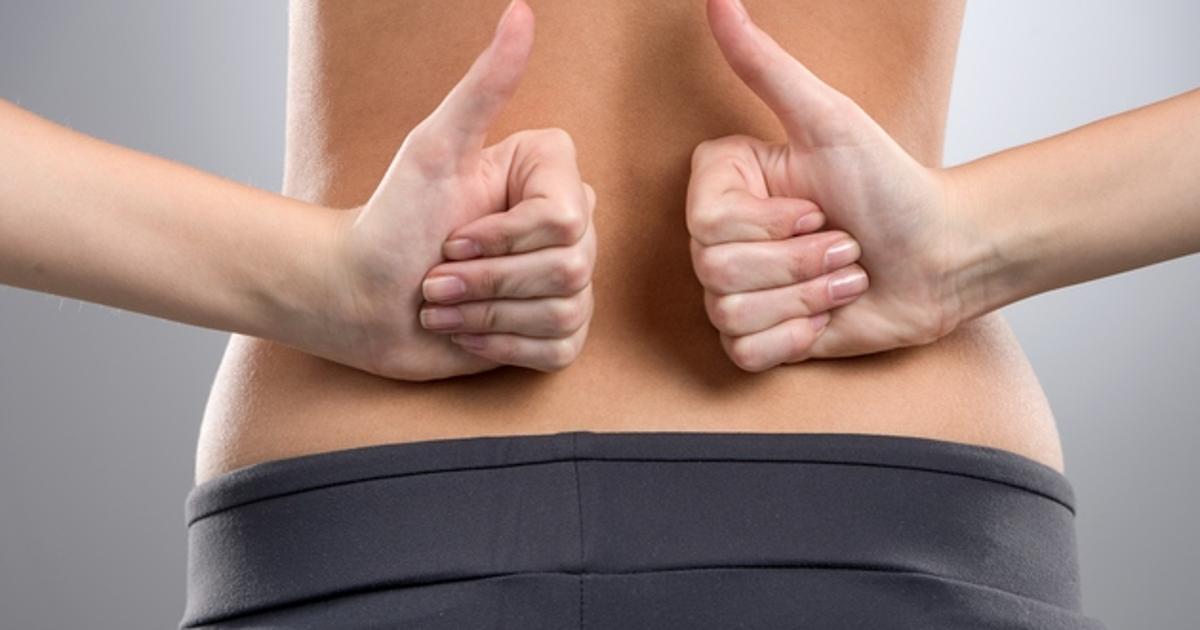Why Does My Lower Back and Balls Hurt
 Low back pain is a common and nearly inescapable phenomenon. Nearly 60% of adults will experience an episode of severe back pain at some point in their lifetime. Besides, lower back pain on left side is actually more common than lower back pain on right side.
Low back pain is a common and nearly inescapable phenomenon. Nearly 60% of adults will experience an episode of severe back pain at some point in their lifetime. Besides, lower back pain on left side is actually more common than lower back pain on right side.
Symptoms of lower back pain include a dull or aching pain often punctuated by periods of rapid increase in intensity. The pain can travel down the hip and into the leg. Some will note a numb of cold sensation in the leg or foot while others describe a hot-poker type sensation.
There are a variety of causes and contributing factors that trigger back pain. People are often frustrated that a clear-cut cause for the pain cannot be found even with x-rays, blood tests and even more advanced imaging like CT or MRI. Don't let this get you down as doctors are also often left puzzled on what is causing the pain. The reality is that lower back pain is often multifactorial in cause.
Medications can help ease the pain, but ask your doctor for a referral to a back specialist if the cause is not apparent and your symptoms persist.
Causes of Lower Back Pain on Left Side
A variety of problems can result in lower back pain. Some are common strains and overuse type injuries while others are serious and potentially life threatening. It is a good idea to visit your doctor who can fully examine you and evaluate for a potentially more serious cause.
Lower Back Strain
A group of muscles and ligaments run the length of the spine and provide support and movement of the spinal column. Stretching too far or overdoing a physical activity can strain these tissues. Small tears can even occur in the tissue causing further pain. Back strain can also occur as a consequence of falling, excessive bending or twisting or lifting heavy objects. Obesity and lack of core body strength contribute to low back strain.
Many describe the pain of a low back strain as stiffness and soreness that worsens with movement, coughing, laughing and sneezing.
Treatment of a low back strain starts by applying ice for 20 minutes several times a day. OTC anti-inflammatory medications such as ibuprofen, naproxen and Tylenol can provide relief of pain. Follow the package instructions and take these medications with food. Visiting a physical therapist can often help when a back strain is not improving as expected. Your doctor can recommend a series of visits with a physical therapist to help you recover.
Pregnancy
Low back pain, particularly on the left side, is common in pregnancy and occurs for several reasons. As the baby grows in size, the uterus can compress pain sensitive structures including nerves. It is not uncommon for pregnant patients to complain of pain traveling down the buttock and leg due to compression of the sciatic nerve. Hormonal changes result in softening of ligaments and this creates additional strain on the pelvic and low back ligaments. The additional weight of the growing baby and mother serve to compound the problem.
To minimize the effects of low back during pregnancy, follow these helpful tips. First, work to maintain good posture. This will help strengthen the core muscles and keep the center of gravity where it belongs. Change positions frequently and stand with weight balanced over the feet as opposed to one leg. Avoid wearing shoes with anything but a minimal heel. Adopt a side lying position whenever in bed or resting. Add a pillow between the knees to help ensure proper spine alignment to minimize strain on the lower back. Maintain physical activity during pregnancy and use ice or heat to ease soreness and discomfort. In severe cases, a visit to a physical therapist may help.
Herniated Disc and Sciatica
Lower back pain on the left side can be caused by herniated disc and sciatica. Discs are structures that provide the cushioning between the bones of our spine. Over time they wear out, shrink, bulge and even rupture. When this happens, the disc material of is forced out of its normal position and results in compression of an adjacent nerve. Nerves are very sensitive to pressure and intense pain is often the result of a herniated disc. When a disc in the lower back compresses the sciatic nerve the condition that results is called sciatica. The pain is generally felt down the buttock, hip and all the way down to the lower leg or foot. Numbness and severe pain can be debilitating.
Treatment of low back pain from a herniated disc starts with a conservative approach using physical therapy, OTC pain relievers and modifying daily activities to limit pain. If a person already has numbness or loss of strength, a more rapid course of treatment is recommended and may include corticosteroid injections and advanced imaging such as MRI.
For most patients, the pain associated with a lumbar herniated disc will resolve with time. The main goals of initial treatment are to relieve pain and return the patient back to their normal level of daily functioning. Additional therapies can include massage therapy or chiropractic care. Surgery is generally a last resort but may be required if numbness and loss of strength are not quickly restored by conservative therapy.
Kidney Infection
 Kidney infections can cause serious low back pain. The infection generally starts in the bladder and travels up to the kidneys creating swelling, inflammation and pain. Fever and nausea can also go along with a kidney infection. The pain can be dull or intense and is located in the flank area along the spine and above the hip. The pain is worse with movement or palpation of the area.
Kidney infections can cause serious low back pain. The infection generally starts in the bladder and travels up to the kidneys creating swelling, inflammation and pain. Fever and nausea can also go along with a kidney infection. The pain can be dull or intense and is located in the flank area along the spine and above the hip. The pain is worse with movement or palpation of the area.
Kidney infections require a visit to a doctor for antibiotic treatment. At times, hospitalization is needed for intravenous antibiotic therapy. Be sure to finish all the antibiotic medication and recheck with your doctor if all symptoms have not resolved.
Occasionally, kidney infections can reoccur and become chronic. This is usually the result of an underlying medical condition or anatomic problem with the urinary tract. In this case your doctor may refer you to a urinary surgeon or kidney specialist.
Kidney Stones
Kidney stones can cause rapid onset of excruciating pain. Some call kidney stones "childbirth for men" as the pain can be that severe. The pain can radiate around the flank into the lower abdomen and down to the groin. A sensation of urgency to urinate is common for those suffering from a kidney stone. Blood may appear in the urine as a consequence of the stone moving in the urinary tract passageways.
Pain control is the first priority in treating kidney stones. A combination of anti-inflammatories and narcotic pain medication is often required. Hydration is key; drinking plenty of water and avoiding dehydration can help pass a kidney stone and prevent new ones from forming. Large stones may get caught up and not pass on their own. In this instance a variety of medical procedures can be used to help pass the stone. A medical specialist (Urologist) will decide the best course of treatment. Options include surgical removal of the stone by going through the urethra or use of sound waves (lithotripsy) or a laser to break up the stone into smaller pieces so it can pass spontaneously.
Spinal Stenosis
This condition results when the spinal canal begins to narrow and encroach on the spinal cord. This process occurs in older individuals and is a result of arthritis, disc herniation and bone spur formation. Common symptoms include back pain, numbness, weakness or loss of strength.
Initial treatment for spinal stenosis is similar to that of herniated disc management. Pain control can be accomplished by using non-steroidal medications, muscle relaxers, antidepressants and narcotic medications. Physical therapy can help maintain strength and mobility as well as improving balance.
A trial of steroid injections can provide long lasting relief for many, but occasionally surgery is required. Your doctor may refer you to a spine surgeon if conservative treatments are not working, the pain is incapacitating or if you are experiencing loss of strength and weakness. The surgical procedure focuses on removing the pressure exerted on the spinal cord.
Other Possible Causes
A variety of other medical conditions commonly cause lower back pain on the left side and seeing your doctor is the best way to sort out the cause. Examples include: ovarian cysts and fibroid tumors, gastrointestinal problems such as irritable bowel, peptic ulcer disease or inflammation of the pancreas. Conditions that result in imbalance or deterioration of muscles can result in abnormal mechanical forces being placed on the spine and surrounding tissues.
Prevention for Lower Back Pain on Left Side
Proper biomechanics are essential for a healthy back and to prevent low back pain. Maintain proper posture while sitting and standing means keeping the head, shoulders and back in alignment with each other. Avoid slouching and slumping while sitting at your desk. Change sleeping position and place a pillow between your knees while sleeping. Alternatively, use a small towel or low back pillow for added support. Avoid high-heeled shoes. Exercise on a regular basis and work to maintain a healthy body weight. Smoking negatively impacts so many areas of health and stopping smoking has been shown to decrease the incidence of back pain and osteoporosis.
When to See a Doctor
Back pain can be a sign of a serious medical condition that potentially could become life threatening. Seek immediate medical attention if any of the following occur in association with low back pain:
- sudden severe abdominal pain
- rapid loss of strength, fever or chills
- recent weight loss or night sweats
- difficulty controlling bowel and bladder function
Any of these could represent a serious or life threatening process such as rupture of the abdominal aorta, cancer or overwhelming infection.
Why Does My Lower Back and Balls Hurt
Source: https://www.md-health.com/Lower-Back-Pain-Left-Side.html
0 Response to "Why Does My Lower Back and Balls Hurt"
Post a Comment